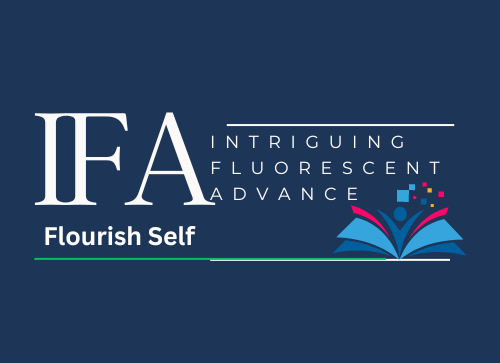
Designing Curriculum for Diverse Learners: Strategies
Designing curriculum for diverse learners is essential in promoting inclusive education and meeting the needs of all students. Inclusive curriculum development ensures that every learner, regardless of their background, abilities, or learning styles, has access to equitable learning opportunities.
By incorporating differentiated instruction strategies and personalized learning approaches, educators can create a curriculum that caters to the unique needs of each student, fostering their academic growth and success. Culturally responsive teaching is also crucial in designing curriculum that recognizes and respects the diverse cultural backgrounds of learners, making them feel valued and represented.
This comprehensive guide will delve into the importance of curriculum design for diverse learners, exploring the challenges faced and offering frameworks and models that can guide educators in creating inclusive instructional design. It will provide strategies for adapting the curriculum to meet the diverse needs of students and highlight the significance of individualized curriculum planning. Through these approaches, educators can create customized learning experiences that support the academic, social, and emotional development of all learners.
Key Takeaways:
- Designing curriculum for diverse learners promotes inclusive education and equity in learning opportunities.
- Differentiated instruction strategies and personalized learning approaches cater to individual student needs.
- Culturally responsive teaching embraces and respects the diverse cultural backgrounds of learners.
- Frameworks like Universal Design for Learning offer valuable strategies for inclusive curriculum design.
- Adapting the curriculum through individualized planning supports the diverse needs of students.
The Importance of Designing Curriculum for Diverse Learners
Designing curriculum for diverse learners is of paramount importance in ensuring equitable and inclusive education. It acknowledges and embraces the uniqueness of each learner, promotes cultural competence, and maximizes learning outcomes. By adopting a learner-centered approach and incorporating inclusive practices, educators can create a curriculum that caters to the diverse needs of all students, fostering an environment of equal opportunities and educational success.
Inclusive curriculum design ensures that all students feel valued, respected, and represented in the educational setting. By incorporating diverse perspectives, cultural experiences, and inclusive content, curricula can create a sense of belonging for learners from different backgrounds.
Recognizing learner diversity is a critical step towards designing an inclusive curriculum. Learners come from diverse cultural, linguistic, and socio-economic backgrounds, and have different learning styles and abilities. Tailoring the curriculum to meet their specific needs enables educators to provide personalized learning experiences and foster engagement in the classroom.
Cultural competence is a key aspect of designing curriculum for diverse learners. It involves understanding and appreciating the cultural backgrounds of students, integrating culturally relevant content, and promoting inclusive teaching practices. By incorporating culturally diverse perspectives, educators can create a more inclusive and enriching learning environment.
One of the benefits of inclusive education is the creation of tailored learning outcomes that address the unique needs and strengths of students. By designing a curriculum that considers individual differences and provides appropriate support, educators can promote meaningful learning experiences and ensure that all students achieve their full potential.
Embracing diverse learning styles is another essential aspect of designing curriculum for diverse learners. Some students may learn best through visual aids, while others may prefer hands-on activities or auditory input. By incorporating a variety of instructional strategies and resources that cater to diverse learning styles, educators can enhance student engagement and understanding.
Inclusive Education: Maximizing Learning Outcomes
“Inclusive education is not just about putting students with diverse needs in the same classroom. It’s about creating an environment where all learners can thrive,” says Dr. Maria Lopez, an education expert. “By designing a curriculum that embraces diversity and fosters inclusion, we can maximize learning outcomes for all students.”
“When students feel valued, respected, and represented in the curriculum, they are more engaged, motivated, and eager to learn,” adds Dr. Lopez. “Inclusive curriculum design promotes a sense of belonging and empowers students to take ownership of their learning.”
Inclusive education benefits not only students with diverse needs but also their peers. It creates a positive and inclusive classroom culture where all students learn from and with each other. By learning alongside diverse peers, students develop empathy, respect, and appreciation for differences, preparing them for success in an increasingly diverse world.
Designing Curriculum for Diverse Learners: Frameworks and Models
Designing curriculum for diverse learners requires the use of frameworks and models that provide strategies and guidelines for inclusive instructional design.
The Universal Design for Learning (UDL) framework emphasizes the importance of offering multiple means of representation, engagement, and expression to meet the diverse needs of learners. By providing various options for how information is presented, allowing different methods for learners to engage with the content, and enabling a variety of ways for learners to express their understanding, the UDL framework ensures that all learners have equitable access to the curriculum.
The UDL framework promotes inclusive instructional design for diverse learners by accommodating for individual learning preferences, abilities, and backgrounds.
Differentiated instruction strategies focus on tailoring instruction to the unique needs of each student. This approach recognizes that students have different learning styles, abilities, and interests, and provides them with personalized learning experiences that cater to their specific needs. By differentiating instruction, educators can better address the diverse ways students learn and ensure that every student receives the support they need to succeed.
Culturally responsive teaching is another important aspect of designing curriculum for diverse learners. It involves incorporating cultural backgrounds, experiences, and perspectives into the curriculum to promote cultural sensitivity, understanding, and inclusivity. By integrating diverse cultural content and perspectives, educators can create a curriculum that reflects the diversity of their students and fosters a sense of belonging.
Inclusive instructional design is a crucial element in designing curriculum for diverse learners. It ensures that all learners, regardless of their abilities or backgrounds, have equitable access to resources and opportunities for learning. By creating a learning environment that values and accommodates the diverse needs of students, educators can foster an inclusive and supportive classroom where every learner can thrive.
By employing frameworks such as Universal Design for Learning, implementing differentiated instruction strategies, incorporating culturally responsive teaching, and adopting inclusive instructional design, educators can design curricula that cater to the diverse needs of all learners, promoting equitable and inclusive education for everyone.
Adapting Curriculum for Diverse Learners: Strategies and Approaches
Adapting the curriculum to meet the needs of diverse learners requires a thoughtful and comprehensive approach. By employing individualized curriculum planning, educators can tailor the learning experience to the unique needs and interests of each student, promoting engagement and personalized learning.
One effective strategy is modifying the content to ensure relevance and accessibility. By incorporating diverse perspectives and examples, educators can create a curriculum that is reflective of the student population and fosters inclusivity. This can be achieved by selecting diverse texts, incorporating multicultural themes, and integrating real-world applications.
In addition to content modification, instructional methods should be adapted to meet the diverse learning styles and preferences of students. Differentiated instruction strategies provide multiple pathways for students to engage with the content, enabling them to demonstrate their understanding through various modalities. This includes providing visual aids, hands-on activities, and opportunities for collaborative learning.
Assessment practices should also be adjusted to align with the diverse needs of learners. By implementing inclusive assessment strategies, educators can ensure that all students have equitable opportunities to demonstrate their knowledge and skills. This may involve providing alternative assessment formats, such as oral presentations or projects, to accommodate different learning styles and abilities.
Overall, inclusive instructional design is crucial in adapting the curriculum for diverse learners. It involves creating an environment that supports and values the unique experiences and abilities of each student. This can be achieved by fostering a sense of belonging, promoting cultural competence, and providing equitable access to resources and learning opportunities.
By implementing these strategies and approaches, educators can create a curriculum that meets the diverse needs of students, fosters inclusive learning environments, and promotes educational equity.
Benefits of Adapting Curriculum for Diverse Learners
“Adapting the curriculum to meet the needs of diverse learners not only promotes educational equity but also offers several other benefits. It acknowledges and values the unique backgrounds and experiences of students, fostering a sense of inclusion and belonging. When students see their identities and cultural perspectives reflected in the curriculum, they are more likely to engage actively and feel motivated to learn. Additionally, adapting the curriculum can help break down barriers to learning, ensuring that all students have the opportunity to succeed.”
Conclusion
Designing curriculum for diverse learners plays a crucial role in promoting inclusive education and ensuring equitable learning opportunities for all students. By recognizing and respecting the diverse needs, backgrounds, and abilities of learners, educators can create a curriculum that fosters equal opportunities and educational success.
Incorporating frameworks such as Universal Design for Learning, differentiated instruction strategies, and culturally responsive teaching can support the design of inclusive curricula. The Universal Design for Learning framework emphasizes the importance of offering multiple means of representation, engagement, and expression to meet the diverse needs of learners.
By adapting the curriculum to meet diverse learner needs and creating tailored learning experiences, educators can create an environment where all learners can thrive. This includes individualized curriculum planning, differentiated instruction strategies, and inclusive instructional design to ensure that all learners have equitable access to resources and opportunities for learning.
By embracing design principles that prioritize the diverse needs of learners, educators can promote educational equity and inclusive education, allowing every student to reach their full potential. Designing curriculum for diverse learners is not only a responsibility but also an opportunity to create an inclusive and empowering learning environment.
Frequently Asked Questions
Why is designing curriculum for diverse learners important?
Designing curriculum for diverse learners is important because it ensures equitable and inclusive education. It acknowledges the uniqueness of each learner, promotes cultural competence, and maximizes learning outcomes.
What are the benefits of designing curriculum for diverse learners?
Designing curriculum for diverse learners promotes inclusive education and ensures equitable learning opportunities for all students. It fosters equal opportunities, educational success, and a sense of belonging for learners from different backgrounds.
What frameworks and models can be used to design curriculum for diverse learners?
Frameworks such as Universal Design for Learning (UDL), differentiated instruction, personalized learning, and culturally responsive teaching can be used to design inclusive curricula that meet the diverse needs of learners.
How can curriculum be adapted to meet the needs of diverse learners?
Curriculum can be adapted to meet the needs of diverse learners through strategies such as individualized curriculum planning, differentiated instruction, and inclusive instructional design. These strategies allow for tailoring instruction and assessment practices to meet the unique needs and interests of each learner.
Why is designing curriculum for diverse learners important in promoting inclusive education?
Designing curriculum for diverse learners is crucial in promoting inclusive education because it ensures equitable learning opportunities for all students and recognizes and respects their diverse needs, backgrounds, and abilities.















